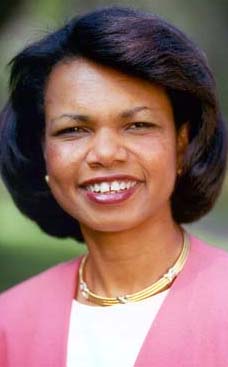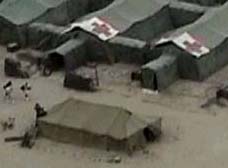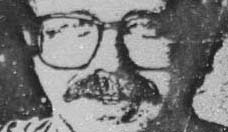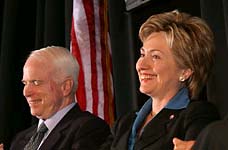
The Pentagon, readying for what it calls a "long war," yesterday laid out a new 20-year defense strategy that envisions U.S. troops deployed, often clandestinely, in dozens of countries at once to fight terrorism and other nontraditional threats. Major initiatives include a 15 percent boost in the number of elite U.S. troops known as Special Operations Forces, a near-doubling of the capacity of unmanned aerial drones to gather intelligence, a $1.5 billion investment to counter a biological attack, and the creation of special teams to find, track and defuse nuclear bombs and other catastrophic weapons. Civil affairs and psychological operations units will gain 3,500 personnel, a 33 percent increase, while the Marine Corps will establish a 2,600-strong Special Operations force for training foreign militaries, conducting reconnaissance and carrying out strikes.
Pentagon readying for "Long War" that envisions U.S. troops deployed, often clandestinely, in dozens of countries at once to fight terrorism
Ability to Wage 'Long War' Is Key To Pentagon Plan
Conventional Tactics De-Emphasized
By Ann Scott Tyson
Washington Post Staff Writer
Saturday, February 4, 2006; Page A01
The Pentagon, readying for what it calls a "long war," yesterday laid out a new 20-year defense strategy that envisions U.S. troops deployed, often clandestinely, in dozens of countries at once to fight terrorism and other nontraditional threats.
Major initiatives include a 15 percent boost in the number of elite U.S. troops known as Special Operations Forces, a near-doubling of the capacity of unmanned aerial drones to gather intelligence, a $1.5 billion investment to counter a biological attack, and the creation of special teams to find, track and defuse nuclear bombs and other catastrophic weapons.
China is singled out as having "the greatest potential to compete militarily with the United States," and the strategy in response calls for accelerating the fielding of a new Air Force long-range strike force, as well as for building undersea warfare capabilities.
The latest top-level reassessment of strategy, or Quadrennial Defense Review (QDR), is the first to fully take stock of the starkly expanded missions of the U.S. military -- both in fighting wars abroad and defending the homeland -- since the Sept. 11, 2001, terrorist attacks.
The review, the third since Congress required the exercise in the 1990s, has been widely anticipated because Donald H. Rumsfeld is the first defense secretary to conduct one with the benefit of four years' experience in office. Rumsfeld issued the previous QDR in a hastily redrafted form days after the 2001 strikes.
The new strategy, summarized in a 92-page report, is a road map for allocating defense resources. It draws heavily on the lessons learned by the U.S. military since 2001 in Iraq, Afghanistan and counterterrorism operations. The strategy significantly refines the formula -- known as the "force planning construct" -- for the types of major contingencies the U.S. military must be ready to handle.
Under the 2001 review, the Pentagon planned to be able to "swiftly defeat" two adversaries in overlapping military campaigns, with the option of overthrowing a hostile government in one. In the new strategy, one of those two campaigns can be a large-scale, prolonged "irregular" conflict, such as the counterinsurgency in Iraq.
In the 2001 strategy, the U.S. military was to be capable of conducting operations in four regions abroad -- Europe, the Middle East, the "Asian littoral" and Northeast Asia. But the new plan states that the past four years demonstrated the need for U.S. forces to "operate around the globe, and not only in and from the four regions."
Yet, although the Pentagon's future course is ambitious in directing that U.S. forces become more versatile, agile and capable of tackling a far wider range of missions, it calls for no net increases in troop levels and seeks no dramatic cuts or additions to currently planned weapons systems.
For example, the active-duty Army will revert by 2011 to its pre-2001 manpower of 482,400, with the additional Army Special Operations Forces incorporated in that number, defense officials said. The Air Force will reduce its strength by about 40,000 personnel.
Moreover, the review's key assumptions betray what Pentagon leaders acknowledge is a certain humility regarding the Defense Department's uncertainty about what the world will look like over the next five, 10 or 20 years, as well as its realization that the U.S. military cannot attain victory alone.
"U.S. forces in all probability will be engaged somewhere in the world in the next decade where they're not currently engaged. But I can tell you with no resolution at all where that might be, when that might be or how that might be," Ryan Henry, principal deputy undersecretary of defense for policy, said at a Pentagon news briefing unveiling the QDR.
"Things get very fuzzy past the five-year point," Henry said of the review in a talk last month.
At the same time, Henry stressed yesterday, "we cannot win this long war by ourselves."
When a major crisis, such as a terrorist strike or outbreak of hostilities, occurs -- requiring a "surge" in forces -- the U.S. military will plan for "somewhat higher level of contributions from international allies and partners, as well as other Federal agencies," the review concludes.
The new strategy marks a clear shift away from the Pentagon's long-standing emphasis on conventional wars of tanks, fighter jets and destroyers against nation-states. Instead, it concentrates on four new goals: defeating terrorist networks; countering nuclear, biological and chemical weapons; dissuading major powers such as China, India and Russia from becoming adversaries; and creating a more robust homeland defense.
Central to the first two goals is a substantial 15 percent increase in U.S. Special Operations Forces (SOF), now with 52,000 personnel, including secret Delta Force operatives skilled in counterterrorism.
The review calls for a one-third increase in Army Special Forces battalions, whose troops are trained in languages and to work with indigenous fighters; an increase in Navy SEAL teams; and the creation of a new SOF squadron of unmanned aerial vehicles to "locate and target enemy capabilities" in countries where access is difficult.
In addition, civil affairs and psychological operations units will gain 3,500 personnel, a 33 percent increase, while the Marine Corps will establish a 2,600-strong Special Operations force for training foreign militaries, conducting reconnaissance and carrying out strikes.
"SOF will increase their capacity to perform more demanding and specialized tasks, especially long-duration, indirect and clandestine operations in politically sensitive environments and denied areas," the report says. By 2007, SOF will have newly modified Navy submarines, each armed with 150 Tomahawk missiles, for reaching "denied areas" and striking individuals or other targets.
"SOF will have the capacity to operate in dozens of countries simultaneously" and will deploy for longer periods to build relationships with "foreign military and security forces," it says.
To conduct strikes against terrorists and other enemies -- work typically assigned to Delta Force members and SEAL teams -- these forces will gain "an expanded organic ability to locate, tag and track dangerous individuals and other high-value targets globally," the report says.
The growth will also allow for the creation of small teams of operatives assigned to "detect, locate, and render safe" nuclear, chemical and biological weapons -- as well as to prevent their transfer from states such as North Korea to terrorist groups.
To strengthen homeland defense, the report calls for improving communications and command systems so that military efforts can be better coordinated with state and local governments.














